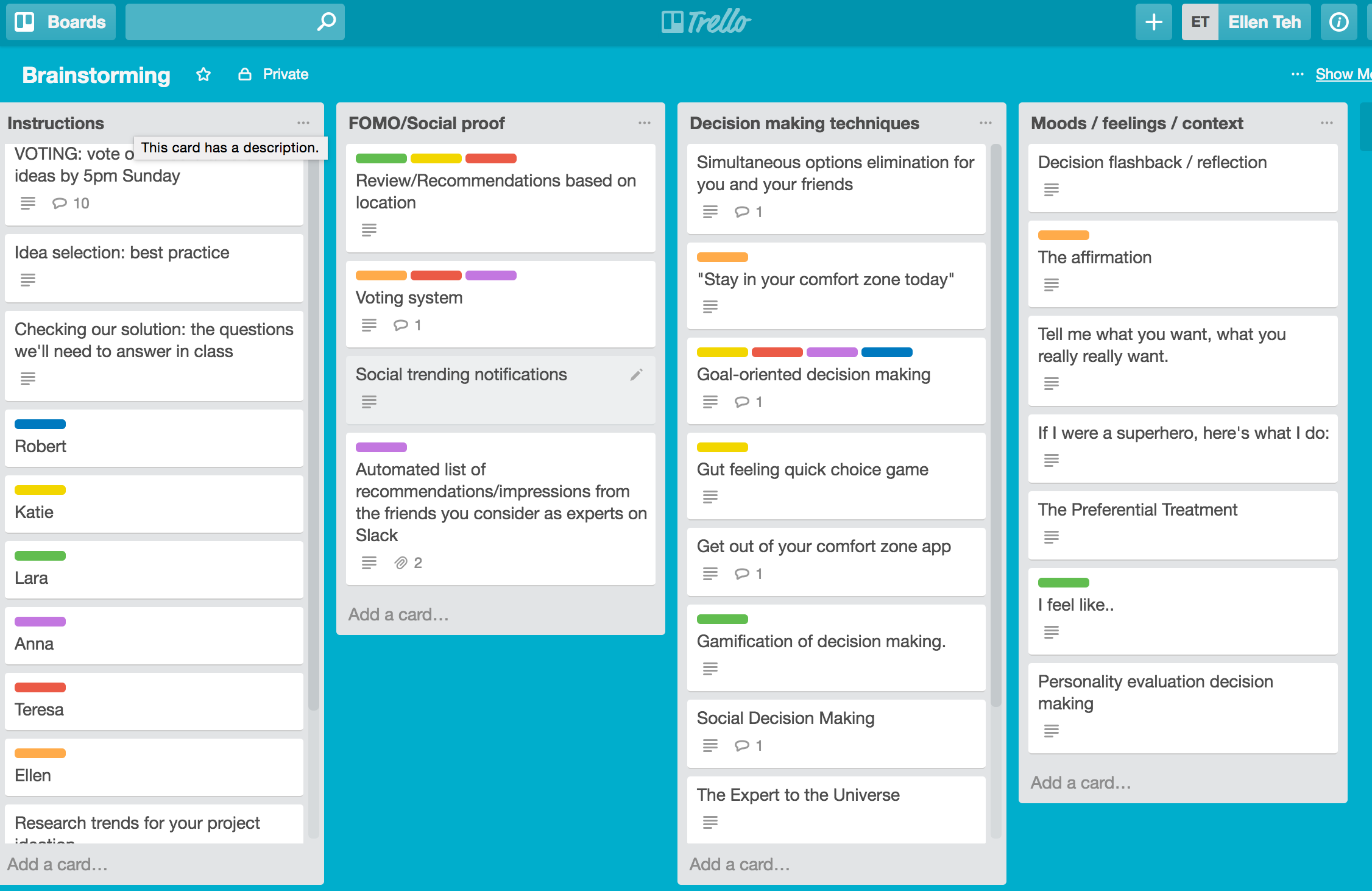Snowflake
- Completed: April – June 2016
- For: University Subject – Digital Media Studio
- Task: As part of a team, create a digital media application.
Starting Point
1 / 8
As a group, we started from a blank slate, in terms of what digital media application we wanted to create. We adopted an agile methodology and used Trello and Slack to communicate with each other.
We explored many topics and context, in regards to decision-making through various academic research and online articles. After 5 rounds of brainstorming, card sorting and refining our ideas, we eventually decided to create a desktop application that will help people decide on making a career change.
Problem Statement
2 / 8
To help frame our focus, we came up with a Point of View (POV) Statement.
We conducted a competitor analysis and research the market, which allows us to come up with a unique value proposition.


User Research and Persona
3 / 8
We carried out user research by interviewing people who are thinking about making a career decision.
We aimed to discover how people feel and behave when they want to change their career. We found the following themes. A lot of excitement when face with a new challenge, but at the same time it is confronting to face their limitation. They also lack the experience in the position they want to switch to, but they don't want to choose a certain career path and discover that it's not what they thought it would be. Users are confident in their acquired skills and knowledge but need to know it will be relevant and useful in their next opportunity.
Furthermore, 2 problem-solving behaviours were identified - externalising their thought (e.g. journaling, making list), and information gathering tool (e.g. recruiters, Seek, LinkedIn, talking to friends and colleagues).
Based on this research, we developed a primary persona to be drawn upon and identified our product's key features and benefits.


Concept Testing
4 / 8
We decided to test our concept and our assumptions by utilising storyboarding and walking through it with users.
The results confirmed our assumptions that users want to externalise their thoughts, and validate their assumptions with and receive advice or confirmation in regards to the next steps from an expert in the industry.
However, our assumptions were proven false in terms of users' preference to receive advice from someone they don't know, and they would have a sufficient network of expert they can turn to.

Low Fidelity Prototype
5 / 8
Based on the results of the concept testing, we decided to move ahead with the idea that the application already has an existing expert for users who do not want to use their existing contacts or don't have an expert in their network.
We decided to focus on the journey of documenting the user's dream, rather than the user's current skills and experience, as they already present in other sources such as LinkedIn.
A low-fidelity prototype was developed and tested with 3 users and 1 expert.

Low Fidelity Prototype II
6 / 8
Based on the results, we iterated, and create another low fidelity prototype.
We re-ordered the workflow of the content, simply the interface, so that the process would be easier for our users.
Again, we tested it with 3 users and 1 expert, but they were different people from the previous round.

High Fidelity Prototype
7 / 8
We created a High Fidelity prototype using Invision. Again, there were further changes made from the low fidelity prototype. We made more effort to streamline the flow of the page and remove the content field that nobody wanted to fill in.
Another round of testing was conducted using the Think Aloud Walkthrough and Microsoft desirability toolkit methods.
Our result shows that whilst the content was great, the experience did not elicit the desired emotional response. Hence, it was recommended that if given further time, two round of iterations should be conducted especially in regards to visual design.
A static high fidelity prototype made in Invision can be found here.






